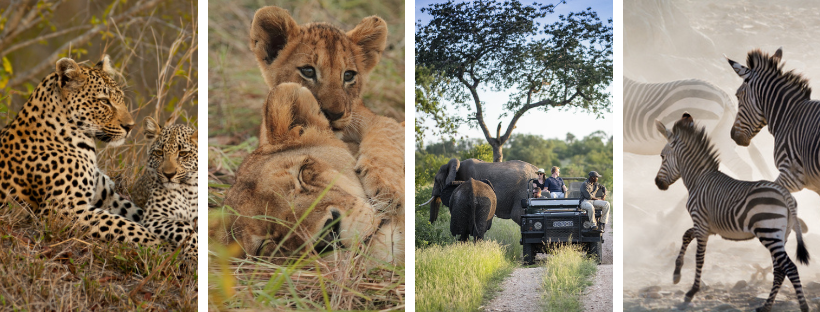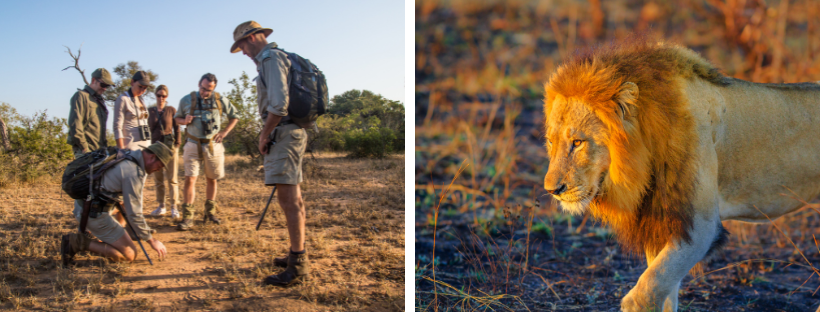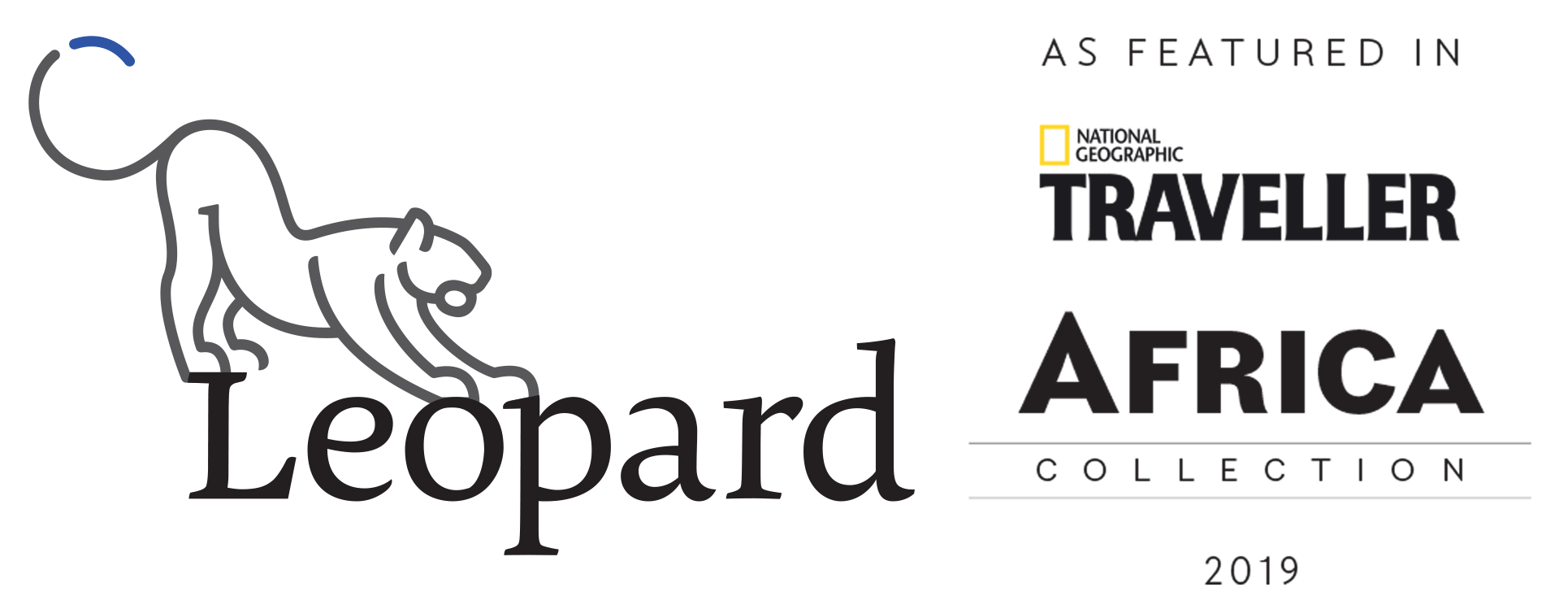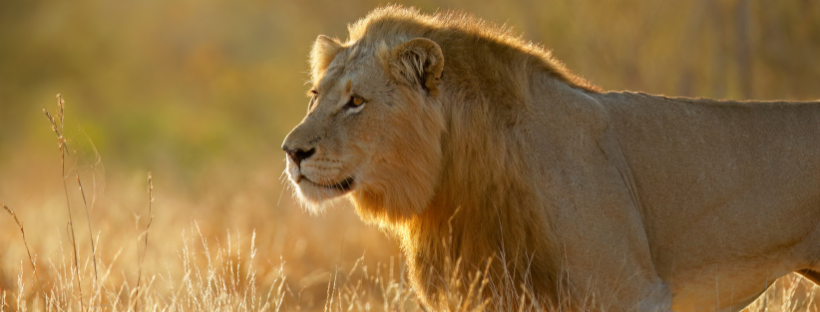Timbavati vs Sabi Sands, Which is Better?
Have you ever wondered whether the sound of your voice or a lion’s roar is more terrifying to your average wild animal? A recent study published in Current Biology answers this question quite definitively. (You’ll find the answer at the bottom of this newsletter).
Speaking of lions, we often get asked, particularly by honeymoon couples looking to enjoy a Big Five safari vacation, “Which is better, Timbavati or Sabi Sands”? Both private concessions, which border the Kruger National Park (making up the Greater Kruger unfenced area), are among South Africa’s top draw cards for seeing Africa’s Big Five.
We’ve shared a little about the differences you can expect at each destination below and we’d be happy to help you discover which lodge and which reserve is perfect for the type of safari that you envisage.
Whether you’re looking for seclusion and romance or a lodge that would cater for a multi-generational family vacation. Or, perhaps, you’re travelling solo and you’re itching to capture breathtaking photos of elephants, or shoot a leopard hoisting its kill into a tree. Whatever you’re looking for, we’re here to help.

Accommodation options in Timbavati vs Sabi Sands
There’s a wide variety of accommodation available in both Timbavati and in Sabi Sands, including some self-catering options geared towards the local Southern African market and premium lodges.
In Timbavati, the accommodation can range from the comfortable but simpler Walkers Plains Camp to the sumptuous Tanda Tula. In Sabi Sands, a more affordable lodge would be Umkumbe, and an example of a premium luxury lodge would be the Dulini, Singita and &Beyond lodges.
What makes Timbavati unique and what animals can you expect to see here?
Timbavati Private Nature Reserve is a truly untouched and unspoiled wilderness. Unlike other regions that have undergone restoration and rewilding efforts, Timbavati stands out as a genuine example of wilderness in its natural state.
According to Timbavati Reserve, it’s also “the only reserve where wild white lions occur regularly and naturally”. White lions are not a subspecies of lion but rather reflect a genetic trait, a recessive gene, that occurs in the area (much like the blue eyes in humans).
The landscape of the Timbavati Reserve is also well-suited for plains game like wildebeest and impala. While it provides the opportunity to see all of the Big Five, other sightings, like that of wild dogs can also be very rewarding.

What makes Sabi Sands unique and what animals can you expect to see here?
The Big Five game area of Sabi Sands is well known for its leopard conservation. While there is never a guarantees of seeing the most elusive big cat, if this is on your bucket list, Sabi Sands is an excellent place to seek them out.
Sabi Sands has more lodges than Timbavati, however, the lodges are very good at limiting the number of game drive vehicles to three or four (at most) per sighting, depending on how relaxed the animal is. This ensures the reserve doesn’t feel crowded.
The rich water supply from the Sabi and the Sand Rivers draws a high concentration of wildlife, making Sabi Sands one of the most bio-diverse wilderness areas in the country. Sabi Sands is known throughout South Africa as having some of the industry’s most well-trained and knowledgeable safari guides and rangers.
Choosing between Timbavati and Sabi Sands
There are many factors to consider when making your choice, for instance, the size of land that each private game reserve occupies can influence the likelihood of seeing certain animals, such as big cats that can cover large tracts of bush. If the reserve’s traversing area is smaller, it can limit the likelihood of seeing certain species. However, even in the larger reserves, there is never a guarantee of particular wild animal sightings and well-trained guides will ensure that you have an interesting and informative safari experience regardless.
Think about what’s most important to you and your partner, or family, and let us know. We’re happy to guide you through the decision-making process.
Now, to answer the question about lions vs humans…

Are lions or humans scarier?
In a recent comprehensive experimental study conducted in South Africa’s Greater Kruger National Park, researchers investigated whether wildlife’s fear of humans surpassed that of lions.
Using automated camera-speaker systems at waterholes during the dry season, they exposed various mammals to recordings of humans, lions, hunting sounds, or non-predator sounds, for example, birds. The results showed that animals fear humans significantly more than lions. This fear response was consistent across a wide range of species, with 95% exhibiting heightened fear towards humans over lions. “Fully 95% of species ran more from humans than lions (significantly in giraffes, leopards, hyenas, zebras, kudu, warthog, and impala) or abandoned water holes faster (significantly in rhinoceroses and elephants).” Wildlife were twice as likely to run and abandon waterholes 40% faster in response to human stimuli compared to lions or hunting sounds.
This is one of the reasons that it’s important to be quiet (or speak softly when necessary) on safari in a game drive vehicle or on a walking safari. You don’t want to scare away the creatures and spoil the safari experience for yourself, or others.
Happy travelling,
The Leopard Team
P. S. If you haven’t booked your December break, reply to this email. We’d be happy to help. If you’re still undecided on where to go, look at our blog for inspiration. It’s our privilege to help you plan your next trip, no matter whether it’s far in advance or a spur-of-the-moment getaway.
Sign up for more newsletters like this here: https://mailchi.mp/2e4afa50d15f/leopard


